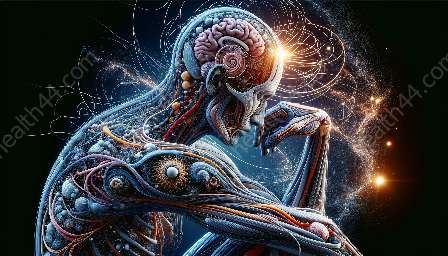The digestive system is a crucial aspect of human anatomy, playing a vital role in our overall health. It includes a series of organs and processes that work together to break down food and absorb its nutrients. In this comprehensive guide, we will delve into the intricacies of digestive anatomy, from the mouth to the intestines, and explore its significance in anatomy, health education, and medical training.
The Structure and Function of the Digestive System
The digestive system comprises several key organs that work in harmony to facilitate the digestion and absorption of nutrients. These organs include the mouth, esophagus, stomach, small intestine, large intestine, liver, gallbladder, and pancreas. Each of these organs has a specific role in the digestive process, contributing to the overall function of the system.
Mouth: The process of digestion begins in the mouth, where food is chewed and mixed with saliva. Saliva contains enzymes that start breaking down food, particularly carbohydrates.
Esophagus: After being chewed and swallowed, food travels through the esophagus to the stomach via a process called peristalsis, which involves muscular contractions that propel the food downward.
Stomach: Once in the stomach, food is mixed with gastric juices that contain hydrochloric acid and enzymes to further break down food and kill bacteria. The stomach also acts as a temporary storage site for food.
Small Intestine: Most of the digestion and absorption of nutrients takes place in the small intestine, which is made up of three sections: the duodenum, jejunum, and ileum. Enzymes and bile produced by the liver and pancreas aid in the breakdown of food, and nutrients are absorbed into the bloodstream through the intestinal walls.
Large Intestine: The large intestine, also known as the colon, absorbs water from the remaining indigestible food and forms it into feces for excretion.
Liver and Gallbladder: The liver produces bile, which is stored in the gallbladder. Bile helps to emulsify fats, making it easier for enzymes to break them down in the small intestine.
Pancreas: The pancreas secretes digestive enzymes and hormones, including insulin, which regulate blood sugar levels.
The Importance of Digestive Anatomy in Health Education and Medical Training
Understanding digestive anatomy is essential in health education and medical training for several reasons. Firstly, healthcare professionals must have a thorough understanding of the structure and function of the digestive system to diagnose and treat digestive disorders and diseases effectively. By comprehending the underlying anatomy, they can provide accurate assessments and interventions for patients experiencing digestive issues.
Furthermore, educating individuals about digestive anatomy can empower them to make informed decisions about their diet, lifestyle, and overall health. By understanding the role of different organs in digestion and nutrient absorption, individuals can take proactive steps to maintain a healthy digestive system, which is crucial for overall well-being.
The Impact of Diet and Lifestyle on Digestive Health
Healthy digestive anatomy is intimately linked to dietary choices and lifestyle habits. A balanced diet that includes fiber, probiotics, and a variety of nutrients is essential for optimal digestion and gut health. Likewise, maintaining a healthy weight, staying hydrated, and managing stress levels can contribute to a well-functioning digestive system.
Conversely, poor dietary choices, sedentary lifestyles, and stress can adversely affect digestive anatomy, leading to conditions such as constipation, gastroesophageal reflux disease (GERD), inflammatory bowel disease, and more. Through health education, individuals can learn about the impact of their choices on digestive health and take proactive steps to prevent digestive disorders.
Medical Training and Diagnostic Techniques
In medical training, students learn about various diagnostic techniques used to assess digestive health, such as endoscopy, colonoscopy, and imaging studies. Gaining proficiency in these techniques enables healthcare professionals to identify abnormalities, tumors, inflammation, and other issues affecting digestive anatomy.
Moreover, medical training emphasizes the interpretation of symptoms related to digestive disorders, allowing practitioners to conduct thorough physical examinations and order appropriate tests for accurate diagnoses. This comprehensive understanding of digestive anatomy and related diagnostic methods is vital for providing quality patient care.
Conclusion
Digestive anatomy is a fascinating and vital aspect of human biology. By understanding the intricate structure and function of the digestive system, individuals can make informed choices to promote their digestive health and overall well-being. Healthcare professionals rely on a deep understanding of digestive anatomy to diagnose and treat patients effectively, making it a fundamental component of medical training and health education.


